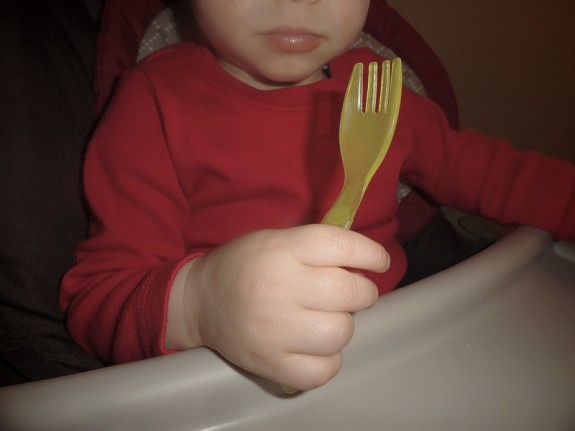Unhealthy Eating And Not Enough Sleep—Not Genes or Laziness—Driving Surge in Childhood Obesity
Child “obesity is not a disease of inactivity,” and the fixes won’t be simple

Photo: Lynn Kelley Author
Nearly one in five children aged 6 through 19 are now considered obese, says the CDC, with the rate soaring over the past 30 years. The CDC pegs obesity as a simple issue of “caloric imbalance”—you’re taking in more energy through food and drink than your body is using. People generally want to fight childhood obesity with a few Top Ten Tips and handy slogans: eat less, play more, get off the couch and eat your leafy greens.
According to a run-down on the state of the science of childhood obesity written by Tara Haelle for Scientific American, however, the issue is not nearly so simple. Drawing on a range of recent studies, Haelle says that some of the standard worries: too many video games, not enough exercise and too much loafing around are actually less important than you’d think. “Obesity is not a disease of inactivity,” she writes.
Instead, the drivers of obesity revolve around simple themes: too much food and too much unhealthy food. These food-related issues are further mediated, she says, by environmental issues that make it harder to eat healthily. For instance, kids using adult-sized plates will take more food than they would if they had a more kid-friendly dish. Vending machines filled with sweets and soda don’t help, either.
We are raising our children in a world that is vastly different than it was 40 or 50 years ago,” says Yoni Freedhoff, an obesity doctor and assistant professor of medicine at the University of Ottawa. “Childhood obesity is a disease of the environment. It’s a natural consequence of normal kids with normal genes being raised in unhealthy, abnormal environments.
The environmental factors in these studies range from the seemingly minor, such as kids’ plate sizes, to bigger challenges, such as school schedules that may keep teens from getting sufficient sleep. But they are part of an even longer list: the ubiquity of fast food, changes in technology, fewer home-cooked meals, more food advertising, an explosion of low-cost processed foods and increasing sugary drink serving sizes as well as easy access to unhealthy snacks in vending machines, at sports games and in nearly every setting children inhabit—these are just a handful of environmental factors research has linked to increasing obesity, and researchers are starting to pick apart which among them play bigger or lesser roles in making kids supersized.
On top of overeating of the wrong kinds of foods, the second major driver of teenage obesity, says Haelle, is that teens aren’t getting enough sleep: “Increasing sleep from 7.5 to 10 hours a day among 18-year-olds could shave four percentage points off the proportion of teens with a BMI over 25, the researchers predicted.”
The broad-ranging rise in childhood obesity rates, owing to environmental factors and the way our society is set up, means that the fixes won’t be so simple as taking the controller away and kicking the kids outside.
ids’ 21st-century environment—not their self-control or reduced physical activity—is the key culprit in the rise in obesity. “People like to make obesity a disease of blame, but the last 40 years has not seen an epidemic of our children losing willpower,” Freedhoff says. “There are dozens and dozens of these environmental factors. Unless we reengineer our children’s environments, we are not likely to see any changes in children’s weights.”
More from Smithsonian.com:
Methane on the Breath Is an Indication of Obesity
Taking Childhood Obesity to Task
/https://tf-cmsv2-smithsonianmag-media.s3.amazonaws.com/accounts/headshot/smartnews-colin-schultz-240.jpg)
/https://tf-cmsv2-smithsonianmag-media.s3.amazonaws.com/accounts/headshot/smartnews-colin-schultz-240.jpg)